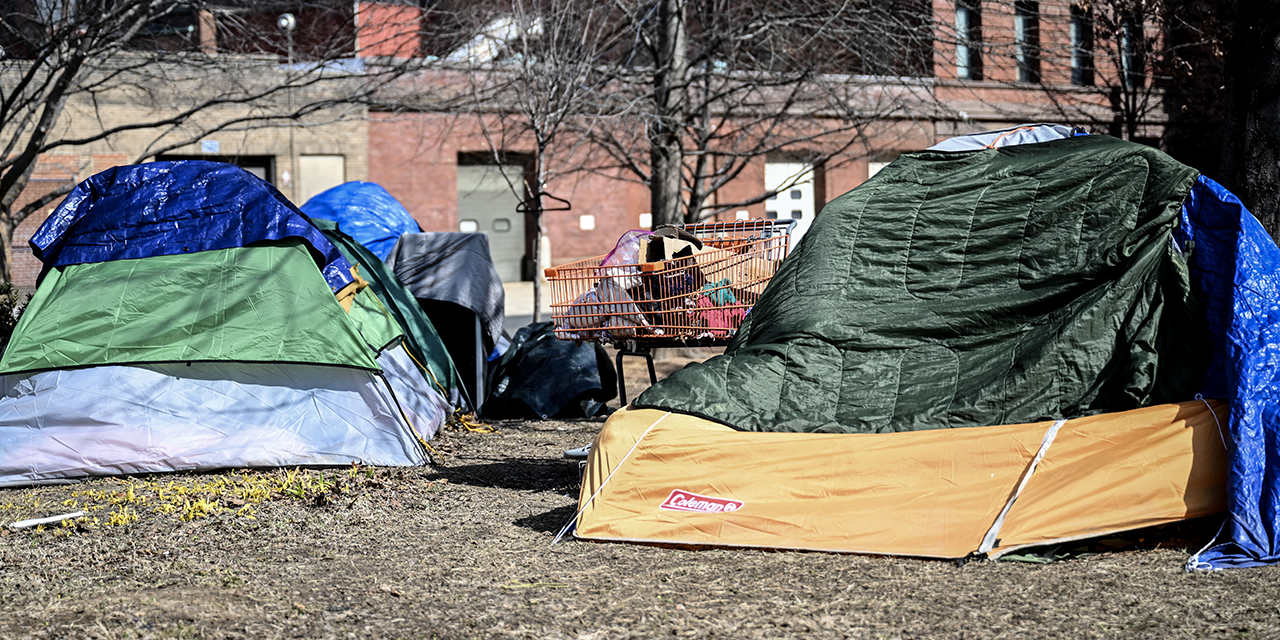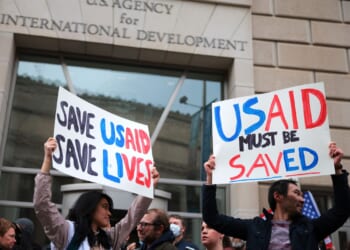
Most Americans understand the link between homelessness and crime. But activists and academics reject the connection, insisting that the homeless pose no elevated crime threat. A new report from the Cicero Institute complicates their argument, revealing that a large share of the nation’s homeless population is composed of registered sex offenders.
The report, covering 41 states, compared counts of sex offenders listed as “homeless” or “address unknown” on state registries with the federal Point-in-Time Count database to determine what proportion of a state’s homeless population appears on its sex-offender registry.
Finally, a reason to check your email.
Sign up for our free newsletter today.
The results are alarming. Sex offenders account for more than 20 percent of the unsheltered homeless population in 20 states, and more than 10 percent in 32 states. In eight states—Connecticut, Delaware, Illinois, Massachusetts, North Carolina, Nebraska, Rhode Island, and Wisconsin—more than 50 percent of the unsheltered homeless population is on the sex-offender registry.
The median state’s share of sex offenders among its unsheltered population was 20 percent—higher than the proportions of families (5 percent), elderly (5 percent), veterans (5 percent), and transgender- or gender-nonconforming-identifying (1 percent) and HIV-positive persons (1 percent) combined.
Many sex offenders struggle to find work and therefore to afford housing. But that’s not the only reason that they are overrepresented on the streets: such offenders also have higher rates of cognitive impairments, substance abuse, and severe mental illness, each associated with higher rates of homelessness. And many shelters refuse to admit sex offenders, making them even more likely than other homeless subgroups to be unsheltered and living on the streets.
Many other misconceptions exist about sex offenders and the registry. For example, reform advocates assert that individuals often get registered for relatively low-level crimes, like public urination. Lourdes Portillo, a researcher at the UCSF Benioff Homelessness and Housing Initiative, suggested that the lack of public bathrooms could land some homeless people on the registry.
This is misleading. Prosecution and registration for indecent exposure, the category within which public urination is classified, is comparatively rare as an isolated offense without a criminal sexual motivation. Most states’ registries consist primarily of people who have committed serious offenses like rape or the sexual abuse of a child.
Sociologists often claim that sex offenders are not especially dangerous. That claim is also misleading—and even less relevant when it comes to homeless sex offenders, who have a heightened risk of recidivism. It’s true that, according to the Bureau of Justice Statistics, sex offenders have the second-lowest recidivism rate by offense type, after murderers. But there are strong reasons to be skeptical of these figures: incidents of sexual violence are grossly underreported. Moreover, sex offenders commit new sex crimes after their release at two to four times the rate of other offenders, suggesting a distinct pattern of specialization.
Homeless individuals are generally more likely to commit crimes than non-homeless people. The San Diego District Attorney’s office found that homeless individuals were hundreds of times more likely than the general population to commit crimes like robbery, arson, and assault. A large study of homelessness by UCSF’s Benioff Initiative found that nearly eight in ten homeless people reported going to jail, and more than three in ten had been in prison. The literature on recidivism indicates that homeless offenders are much more likely than non-homeless offenders to commit new crimes.
Despite these risks, the U.S. Department of Housing and Urban Development allows publicly funded programs to include sex offenders in facilities and services that help women, children, and other vulnerable populations. This misguided policy may be one reason why homeless people have such high rates of sexual victimization—they are forced to live around sexual victimizers.
More research is needed to determine which policy interventions can best mitigate sex-offender homelessness. While many criminologists point to residence restrictions and community-notification policies as potential drivers of homelessness, the scholarly literature is inconclusive, partly because these policies are not consistently enforced.
Meantime, policymakers should use available tools of social control to reduce the public-safety risks posed by large numbers of sex offenders living on the street. They can enforce prohibitions against street camping and failing to register or provide an address; restrict the parole of sex offenders lacking a housing plan; and expand the use of sex-offender civil-commitment laws.
The prevalence of unhoused sex offenders should motivate municipalities to adopt a more assertive approach to street homelessness. Failure to act leaves communities—including vulnerable homeless individuals—less safe.
Photo by Fatih Aktas/Anadolu via Getty Images
City Journal is a publication of the Manhattan Institute for Policy Research (MI), a leading free-market think tank. Are you interested in supporting the magazine? As a 501(c)(3) nonprofit, donations in support of MI and City Journal are fully tax-deductible as provided by law (EIN #13-2912529).
Source link


















